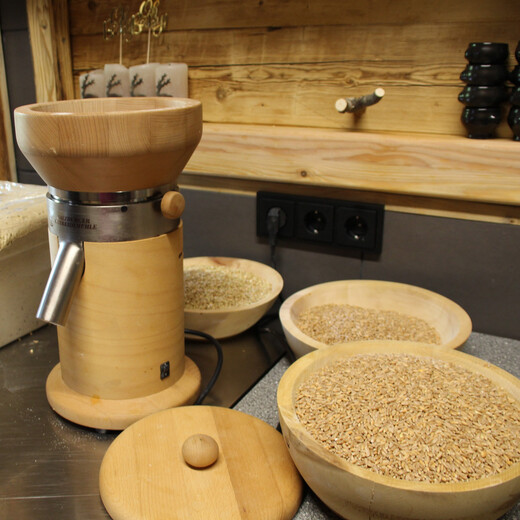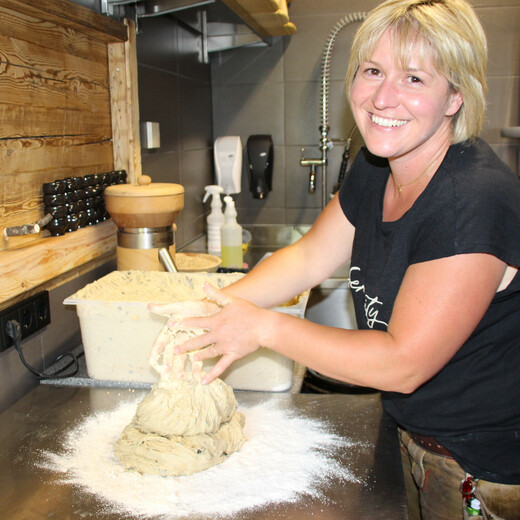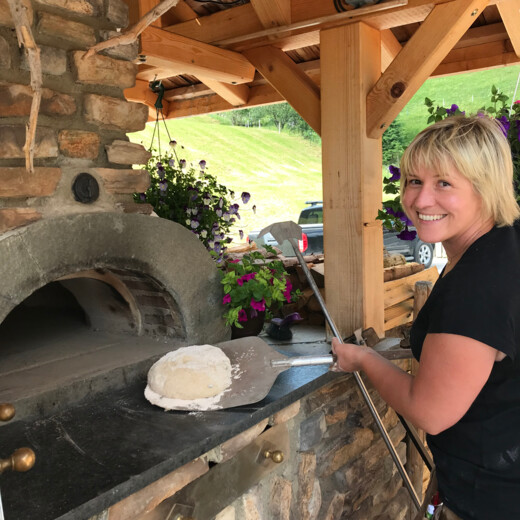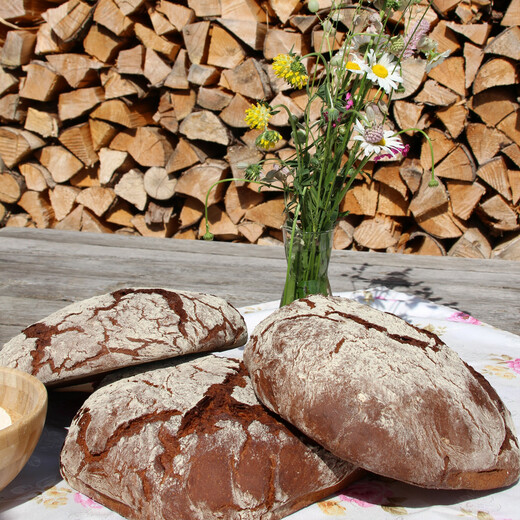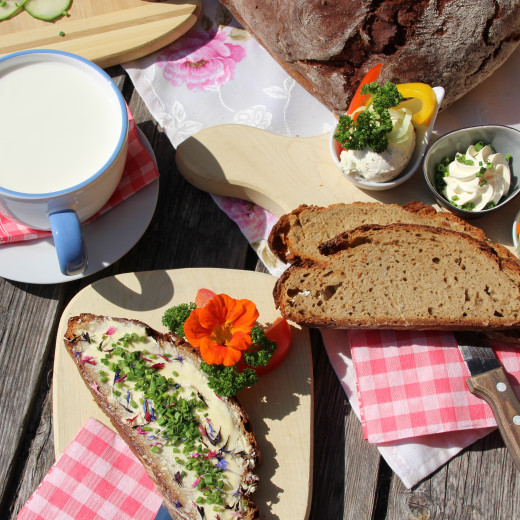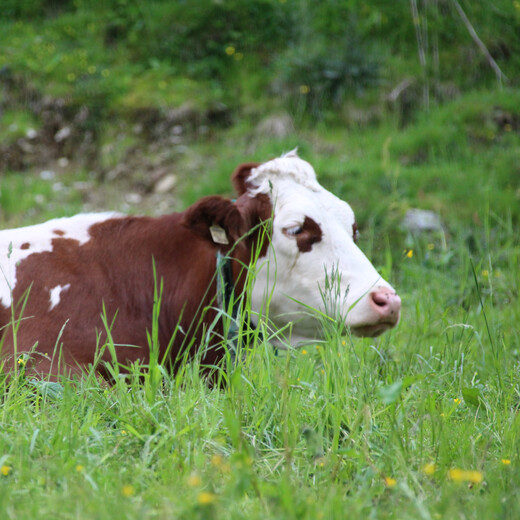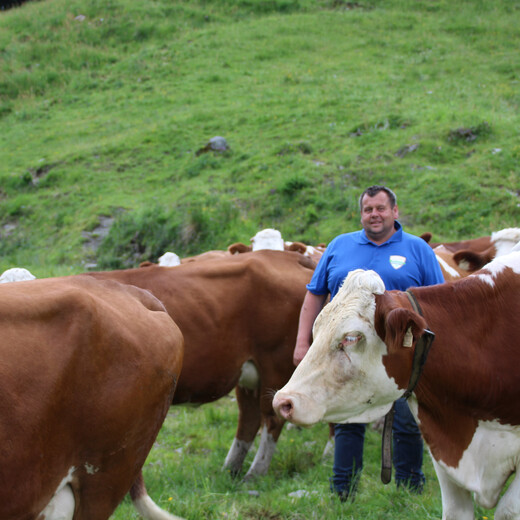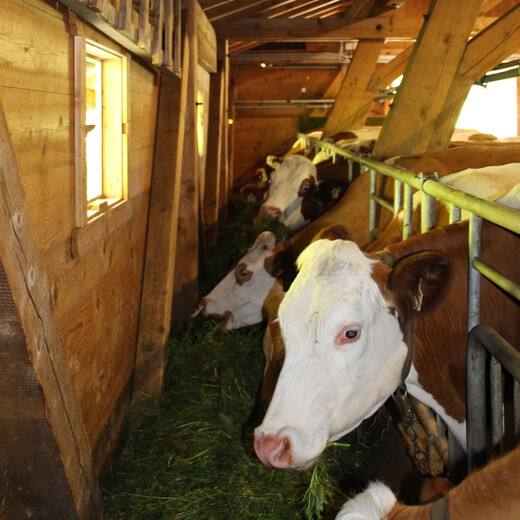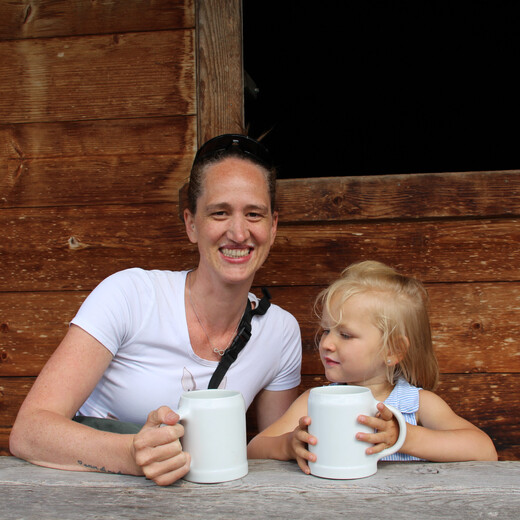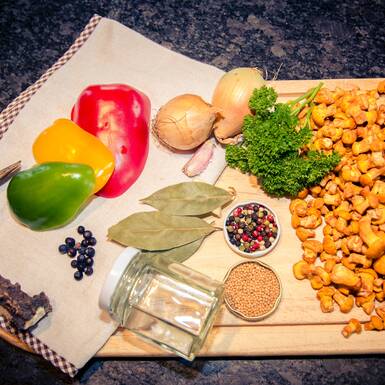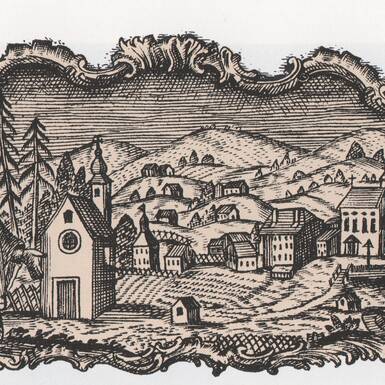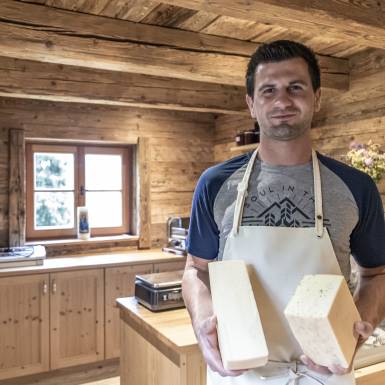- Backstage
- Traditions
- Cuisine
A day on the Alpine Pastures
The summer landscape in the Glemmtal is characterised by ancient spruce forests, crystal-clear mountain waters and rich green Alpine pastures. Huts with adjoining stables, some of which were still built in a very traditional way, have always been regarded as the summer residence of grazing livestock. As the farmers in the valley have little space for pastures, the cows with their calves, horses, sheep, goats and pigs are driven to the beautiful Alpine meadows. The livestock used to be looked after by dairymen and women who milked the cattle and processed the milk into various dairy products. Fresh milk, fine butter and tasty cheese were produced in a laborious process by hand.
Alpine Pastures changing with the times
When guests started to arrive in the valley, the image of the Alpine huts transformed. More and more mountaineers use the huts for a stopover. The buildings were renovated step by step, machinery was purchased to make the work easier, and the focus of many Alpine huts is currently on catering for guests and the production of regional products. Today we set out to pay a visit to two different Alpine huts. We were privileged to be guests, tasters and enthusiastic observers! What does the host family do in the early morning before the first guests come knocking? And who looks after Elli, Kersch and Flecki every evening?
Fresh farmhouse bread from the wood-fired oven at an altitude of over 1,300 metres
As early as 4:00 am, when the Glemmtal is still immersed in peaceful sleep, Sonnalm hostess Manu heats up the beautiful bread oven outside the entrance door. Finely chopped beech wood is filled into the oven opening and set alight. This ancient way of heating an oven is called "burning out". But now, from the beginning. A fresh farmer's bread step by step, so to speak.
1. The grinding of the grain
At the Sonnalm, only buckwheat and rye from Austrian farmers are used. Manu and her husband Christoph regularly pay a visit to a well-known farmer and buy the unground grain.
Manu grinds the grain with her own natural stone mill to produce the flour, as has always been the custom in Salzburg. The flour is then sifted by hand. The different number of sieving processes determine the fineness of the finished product. The majority of the grist and bran are used in the different loaves of bread, while the rest is used to feed the Alpine sheep.
The processing of one kilogram of grain produces about one and three-quarters kilogrammes of flour.
2. The bread dough
Manu uses a homemade natural sourdough. Rye is mixed with water, left to stand for five days, and a little flour is added every day. In the evening, she then prepares the different bread doughs and leaves them to rest overnight. Early in the morning, the dough is kneaded into loaves and shaped.
3. The bread oven
The oven is initially filled with beechwood logs and heated. In bread baking terminology, this is called "burning out". Depending on the temperature, the wood is removed after one to four hours ("sweep out"), and then the bread is "shot in". Depending on the weather and air pressure, the loaves are then baked for one to one and a half hours.
After the bread has been cooling for about two hours, it is lovingly served to the guests. What a perfect start to the day - with buttered bread, fresh herbs and a delicious glass of milk. Speaking of milk - on the opposite side of the valley, 24 ladies are waiting for our visit!
Fine Alpine Herbs for Elli, Kersch and Flecki
At the Huberalm, which lies at an altitude of 1,584 metres, we meet the farmer Günther. Together with his wife Petra, he runs the farm, which he took over from his father and he from his grandfather. The farm has always been in the family. In the middle of the 19th century, the "Medalpe" was bought, which is now known and loved by locals and guests as the "Huberalm".
Günther manages the Alm with passion and dedication. Everyone in the family lends a hand, and the responsibilities are assigned to different family members. In the summer, one or two farmhands help out - the boys from the nearby agricultural school learn practical and interesting skills for life.
The Huberalm, which covers an Alpine pasture area of 138 ha, ranges from 1,400 to 2,100 metres above sea level and borders on neighbouring Oberpinzgau. Before the animals are driven up in spring, it takes about five to six days to fence in all the pastures. Up to 70 cattle spend the period from early June to mid-September on the Huberalm. Until 20 years ago, the animals were still driven up on foot. This required a six to seven-hour walk in the mountains and many helping hands. Nowadays, the animals are brought to the mountain pasture by trailer.
Short ways - good milk
24 cows are currently being milked on the Huberalm this year. The Stöckl family runs their own cattle rearing farm, so their own bull provides plenty of offspring. After the calves have been sucking milk from the cows for about three months, they gradually become independent. They have their own area in the pasture. The mother cows are then able to be milked.
At around 04:00 pm, the dairy cows are already gathering around the Alpine pasture and waiting to be milked. They are then all ushered into the barn, taken to their places and attached to the milking equipment. In the past, this work had to be done by hand - today, modern milking machinery saves time and effort. The animals spend the night in the barn before they are milked again early in the morning at 4:30 am. Afterwards, Elli, Kersch and Flecki and the rest of the ladies leisurely head back to the lush pastures.
At the Huberalm, you can enjoy homemade milk and cheese for your snack. Dani and Anna sampled the products - and the outcome was clearly impressive for the two of them! The rest of the milk is delivered to the Pinzgau Milch dairy in Maishofen. Only short distances and local suppliers for top-quality products from the region.
The livestock stays on the mountain pastures until mid-September. Afterwards, they return to the farm and around the time of All Saints' Day, the cattle are taken to the outdoor barn.
One can clearly sense and even taste the love for the homeland and the work carried out in and around nature in the products of the Alpine farmers. A part of your holiday to enjoy and to take home with you!

